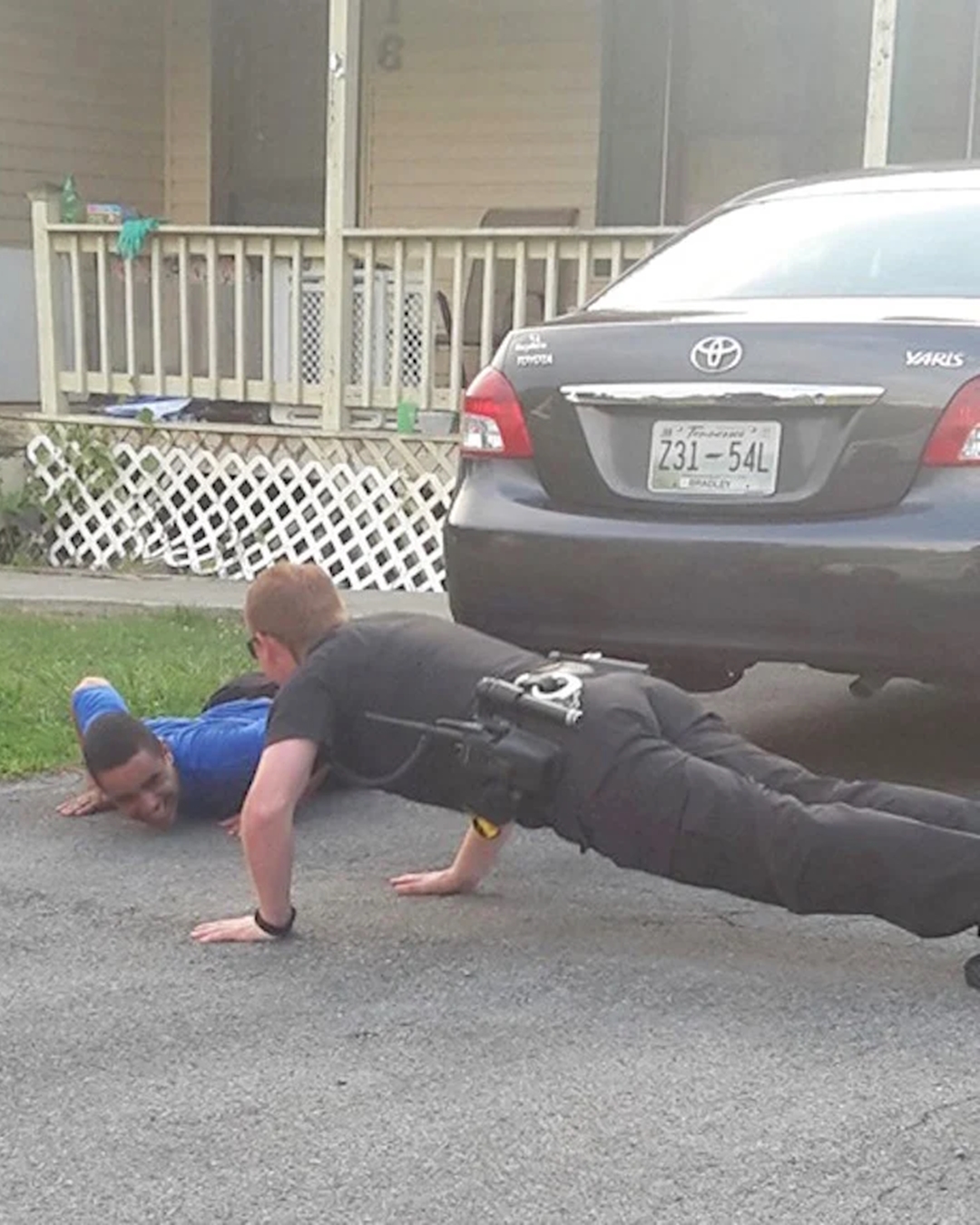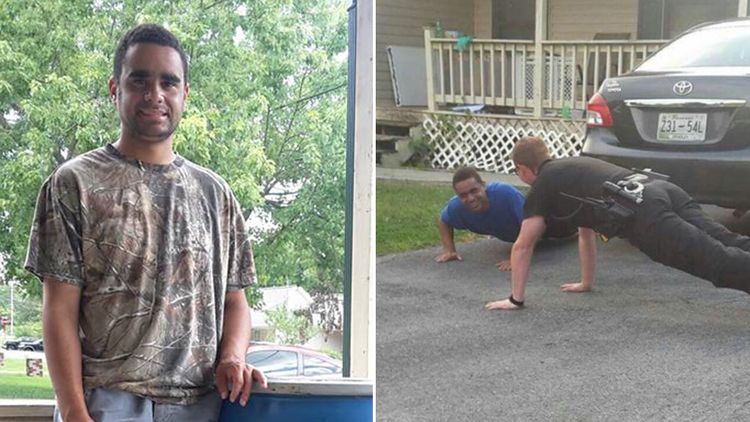True community policing isn’t just about patrolling streets or responding to emergencies. It’s about connection. It’s about seeing the human being behind the crisis and having the creativity and compassion to respond in a way that heals instead of escalates. For Christy Richardson and her son, “Bubba,” that profound human connection arrived at their doorstep in the form of Deputy Corey Loftis, and he brought with him one of the most unexpected and effective treatment tools: a simple set of push-ups.
It had been a difficult day in Christy’s home. Her son, Bubba, who has autism, was having a tough time. For any parent of a child on the spectrum, this description is loaded with meaning. It wasn’t a simple tantrum. It was an emotional storm, a potential autistic meltdown where the world becomes an overwhelming, frustrating, and frightening place. Nothing Christy did seemed to ease her son’s frustration or bring him back.
But Christy knew something special about Bubba: he loved police officers. He was fascinated by the uniform, the car, and the idea of who they were. In a moment of pure inspiration—a mother’s last-ditch effort—she picked up the phone. She asked if a deputy could just come by, not to solve a crime, but simply to be there, hoping the sight of an officer might make a difference.
Not long after, Deputy Corey Loftis arrived at their door.

A New Kind of First Response
The success or failure of a call like this is decided in the first thirty seconds. An officer with a traditional, authoritative mindset might enter, see a child being “unruly,” and escalate the situation with loud commands, making the sensory overload infinitely worse.
Deputy Loftis did the opposite. This is the kind of response that officers learn in advanced training classes focused on de-escalation and neurodiversity. He didn’t rush in. He didn’t overwhelm Bubba. He approached with patience, warmth, and an easygoing manner that immediately signaled he was a friend, not a threat.
He assessed the situation, not as a “problem,” but as a child who was struggling. And instead of focusing on the crisis, he offered Bubba something totally unexpected: a new, positive way to channel his powerful emotions.
He dropped down to the floor.
Right there in the living room, Deputy Loftis began doing push-ups. He invited Bubba to join him, turning a moment of high-stress tension into a simple, physical game.
The Science of a Simple Push-Up
What Deputy Loftis did, whether by training or by brilliant instinct, was a perfect example of therapeutic intervention. For a child with autism, especially one in a state of sensory overload, “heavy work” or proprioceptive input—the act of pushing, pulling, or using deep muscle pressure—is incredibly calming. It’s a scientifically-backed method to help a dysregulated nervous system ground itself and find its center.
This wasn’t just exercise; it was a non-verbal way of communicating. By getting on the floor, he was joining Bubba in his world, on his level, rather than forcing Bubba to comply with his. This act of “co-regulation” is a powerful, evidence-based tool for helping a person in crisis find their way back to a state of calm.
It was, in effect, the perfect treatment for that moment.
Soon, the tension in the room began to melt. Bubba watched, his frustration and anger being replaced by curiosity. Then a smile. And finally, a sound his mom hadn’t expected to hear for hours: laughter.
“Bubba was laughing before Deputy Loftis left,” Christy later said, the relief in her words palpable. “Which I honestly thought was impossible at the time!”
Full Story: https://aquariumbee.com/man-loses-360-pounds-naturally-internet-rallies-to-support-his-next-step/
The Long Road to Recovery
For Christy, the relief was overwhelming. This wasn’t just about calming her son down. It was about having a person in a position of authority see her son’s true worth. It was about someone taking the time to truly connect, to meet Bubba where he was, and to turn a hard, painful moment into a memory of joy and friendship.
The “recovery” from a full emotional meltdown can take hours, sometimes even days. Deputy Loftis didn’t just stop the crisis; he helped Bubba begin his emotional recovery immediately.
“I can’t thank Officer Loftis enough for being so caring throughout the whole situation,” Christy said.
This single interaction has a ripple effect that is impossible to measure. For Bubba, it reinforces that police officers are safe. They are helpers. They are friends. In a world where interactions between law enforcement and individuals with special needs can tragically go wrong, Deputy Loftis has built a bridge of trust that will last a lifetime.
This is what community policing is supposed to look like. It’s not a buzzword or a policy. It’s a human-to-human connection. It’s the long, patient work of building trust, one interaction at a time. It’s about understanding that sometimes, the best way to “rehabilitate” a difficult situation isn’t with force, but with kindness.
That day, Deputy Loftis didn’t just respond to a call. He brought compassion, creativity, and a few push-ups that turned everything around. It’s a powerful reminder that sometimes the smallest, most unexpected gestures of kindness can leave the biggest impact, changing not just a day, but a little boy’s entire perception of the world.
Full Story: https://aquariumbee.com/tammy-hembrows-bikini-photos-are-stirring-controversy-heres-why-everyones-talking/


